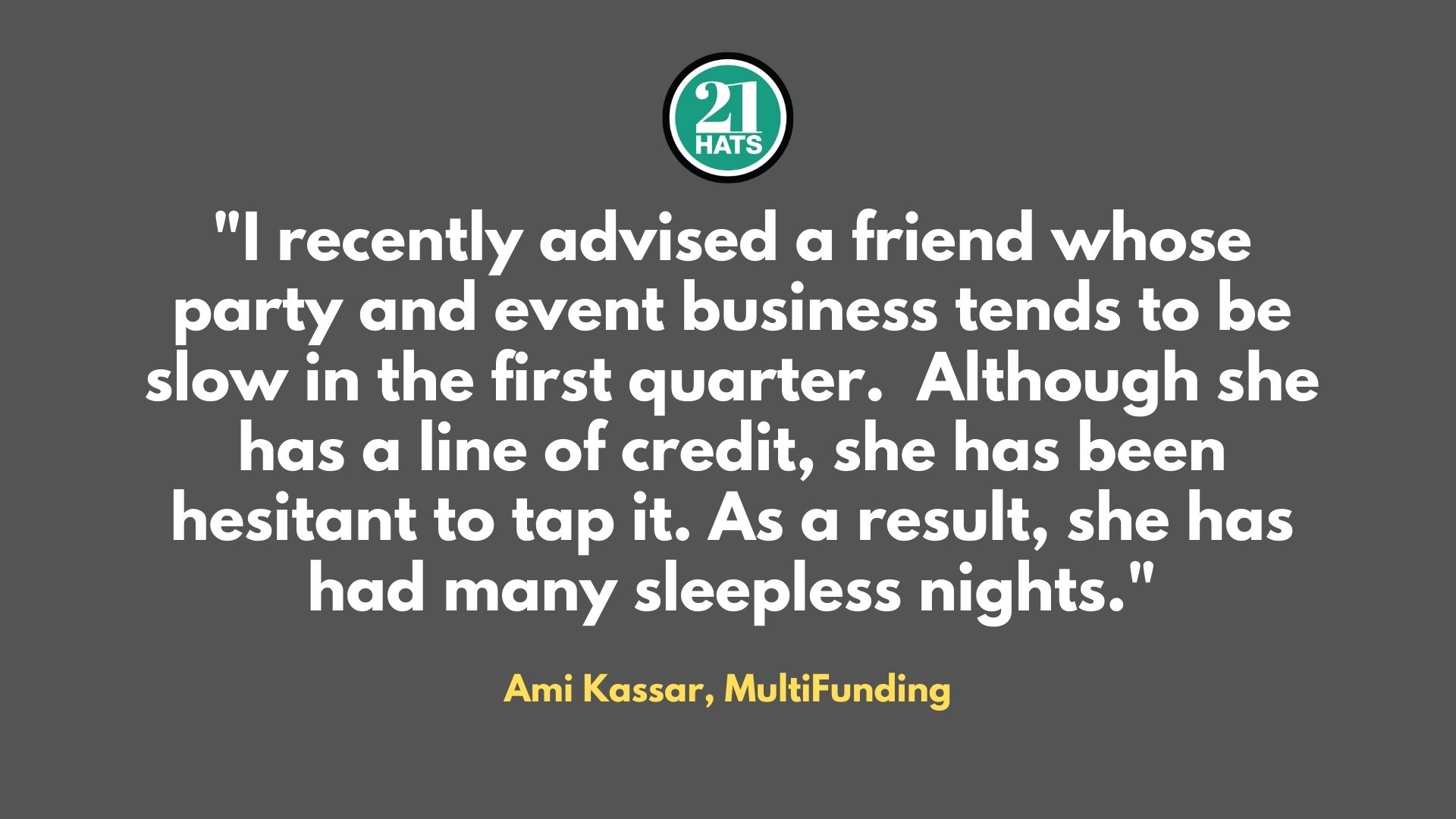When Is It Time to Use Your Line of Credit?

Don’t let a fear of debt keep you from managing your finances strategically.
By Ami Kassar
A few weeks ago, I posted about the importance of having a line of credit as an insurance policy in case of a surprise or an emergency in your business. My previous post encouraged business owners who aren’t comfortable with the idea of opening a line of credit to try to get comfortable.
I understand that many business owners are wary of taking on debt. But I also know that having a line of credit can add substantially to the financial stability and security of a business. And it’s not just for use in an emergency. In fact, some businesses would have a very hard time operating without a line of credit. I have often said that a line of credit should be part of the furniture in certain businesses, a routine part of the business’s operating system. I want to dig into two scenarios.
Some businesses have seasonality issues. These businesses know they will have down months and up months, depending on the cycles in their industry. One example is a retail business, where you can predict that a large percentage of your revenue will come around the holiday season. That’s good to know, but there are still employees and bills to pay in slow months, which is why these kinds of businesses are prime candidates for a line of credit. They should feel safe and comfortable tapping into the line during these off-months, with the full expectation of paying off the loan during the strong months.
I recently advised a friend in the party and event business. Her business is historically slow in the first quarter, when she often loses money only to catch up throughout the year. She has a great fear of debt, and although she has a line of credit, she has always been hesitant to tap it during those slow first quarters. As a result, she has had many sleepless nights. I tried to persuade her that she was causing herself unnecessary pain. To my mind, her case is a perfect example of when a line of credit is appropriate.
The second scenario includes businesses that have to hold significant amounts of inventory and that accumulate accounts receivable. Inventory-heavy businesses need to have goods on the shelf when customers come into the door and order, and they often have to pay their suppliers before the goods are sold. Other businesses must wait for customers to pay after delivering their product or service. In these instances, as well, I believe using a line of credit is appropriate.
I know of a gift company that needs to order and pay for inventory in June to prepare for the holiday season. For this owner, there is a four- to six-month lag before her cash comes back in. As long as she is confident in her product mix and her ability to sell the goods at a profit, this is another example of an appropriate use of a line of credit.
In another instance, I have a client who runs a successful consulting company with 10 consultants. The firm bills its clients at the end of the month for services rendered, and then the clients typically take 60 days to pay. Payrolls, however, have to be met every two weeks, and the firm needs to stay current in order to retain its talent. This is another case where a line of credit could be extremely helpful.
Entrepreneurs can get into trouble when they use their lines of credit for the wrong reasons. If you are investing in a business that involves some risk and needs capital to grow, you might consider term debt. If you use up your line of credit for the wrong reasons and suddenly need cash, you will have a problem.
As a reminder, a good rule of thumb for lines of credit is 10 percent of your top-line sales or 85 percent of your accounts receivable and inventory. I will also explain different types of lines of credit in a future post.
Ami Kassar is CEO of MultiFunding.